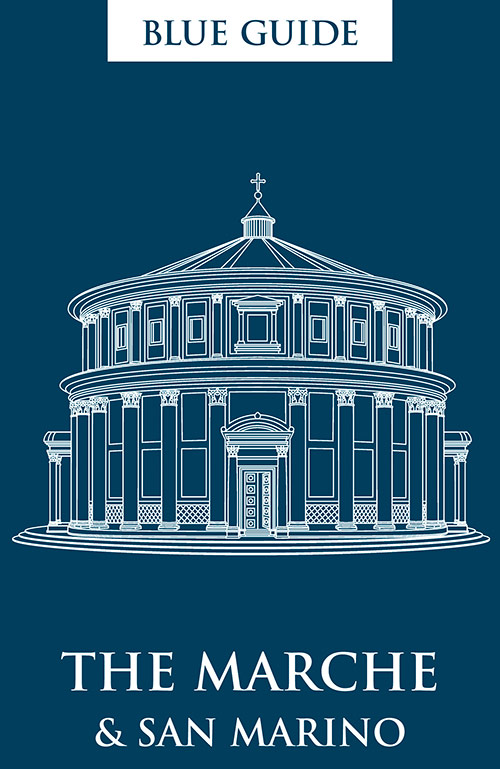
A stunningly beautiful region of coast, hills and mountains. As well as the historic town of Urbino, birthplace of Raphael, the region encompasses the former maritime republic of Ancona, the sandy beaches of the Palm Riviera, the dramatic scenery of the Sibylline Mountains, and lesser-known places such as the marble-built town of Ascoli Piceno.
View the book’s contents, index and some sample pages, and buy securely from blueguides.com here »







Dear Blue Guide,
On page 214 of the 2006 Blue Guide to the Marches it says of Potenza Picena “Once famous for the production of fine quality damask and brocades of silk and wool ( still made by the nuns),” Please could you help as to:
1) whether the period referred to included the period 1430 to 1500
2) which nuns are now producing it and the address of the convent
3) whether they may have samples from the period 1430 to 1500
4) if you do not know the answers could you please let me know who might
Very many thanks
Good morning!
I am afraid the results of my research will be disappointing to you, but I hope that won’t stop you going to Potenza Picena, to visit the nuns in the convent of the Addolorata! I have just had a long and enjoyable conversation with one of the sisters, considered to be the most knowledgeable on the subject of weaving damask. She told me that if you let them know a day or so before (Istituto Suore dell’Addolorata, Via Umberto, Potenza Picena, T: 0733 870535), they would be happy to show you their looms and samples of their work. Unfortunately, nothing pre-dates the late 1800s.
The community was founded by a group of pious spinsters on 5 April 1816, who met to weave linen and carry out charitable acts. On 26 March 1838 they were accorded a papal permit to reside in the huge old Jesuit convent, long abandoned, in a group of ten nuns. They were entrusted with the task of taking care of the church laundry, preparing the hosts for Mass, and weaving altarcloths and other items for religious purposes.
However, it was only in 1882 that the group of nuns was recognised as an Order, the Figlie della Madonna Addolorata (Daughters of Our Lady of Sorrows). About this time, a novice from Northern Italy joined the community, and was ordained as Suor Virginia. She knew how to make damask and brocades, and the bishop soon gave permission to acquire the new looms and materials for this activity. The results were excellent, and soon these fine fabrics were much in demand, not only for the local churches, but by the wealthy families of the region. Wool, silk and cotton were used, and the quality of the work and the particular designs made the nuns’ work instantly recognisable.
Sadly, production stopped about ten years ago. There is no longer a wide demand for these fabrics, which are obviously very expensive, and competition from Chinese manufacturers is too strong.
I am sorry; however I wish you the best of luck with your studies.
Regards,
Ellen Grady
Another picture.